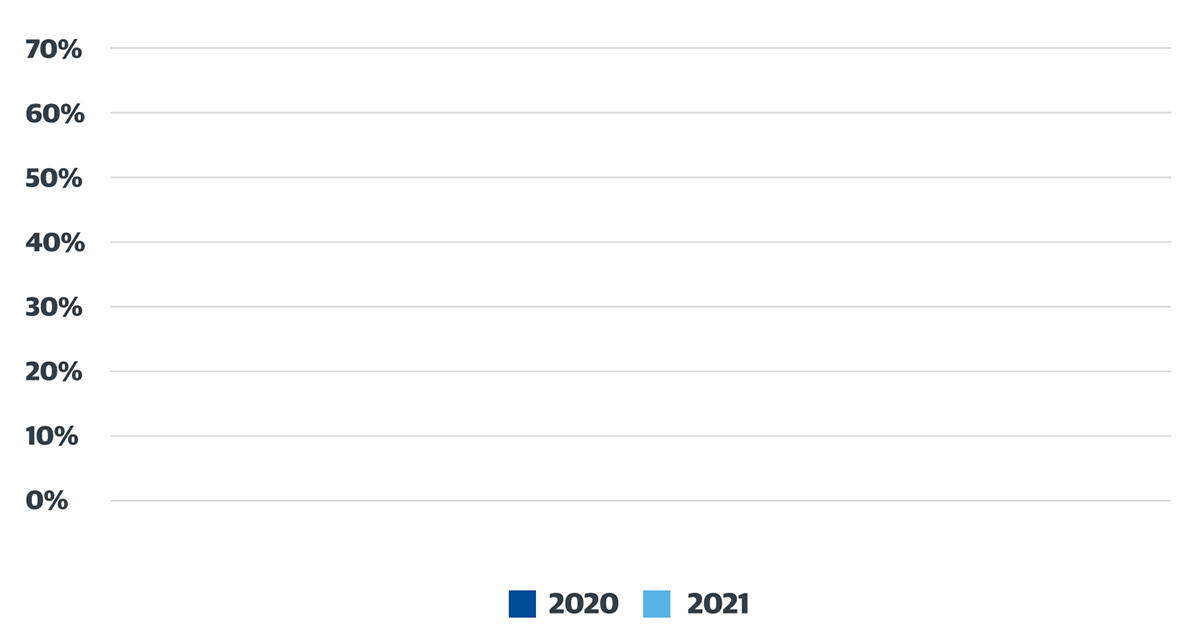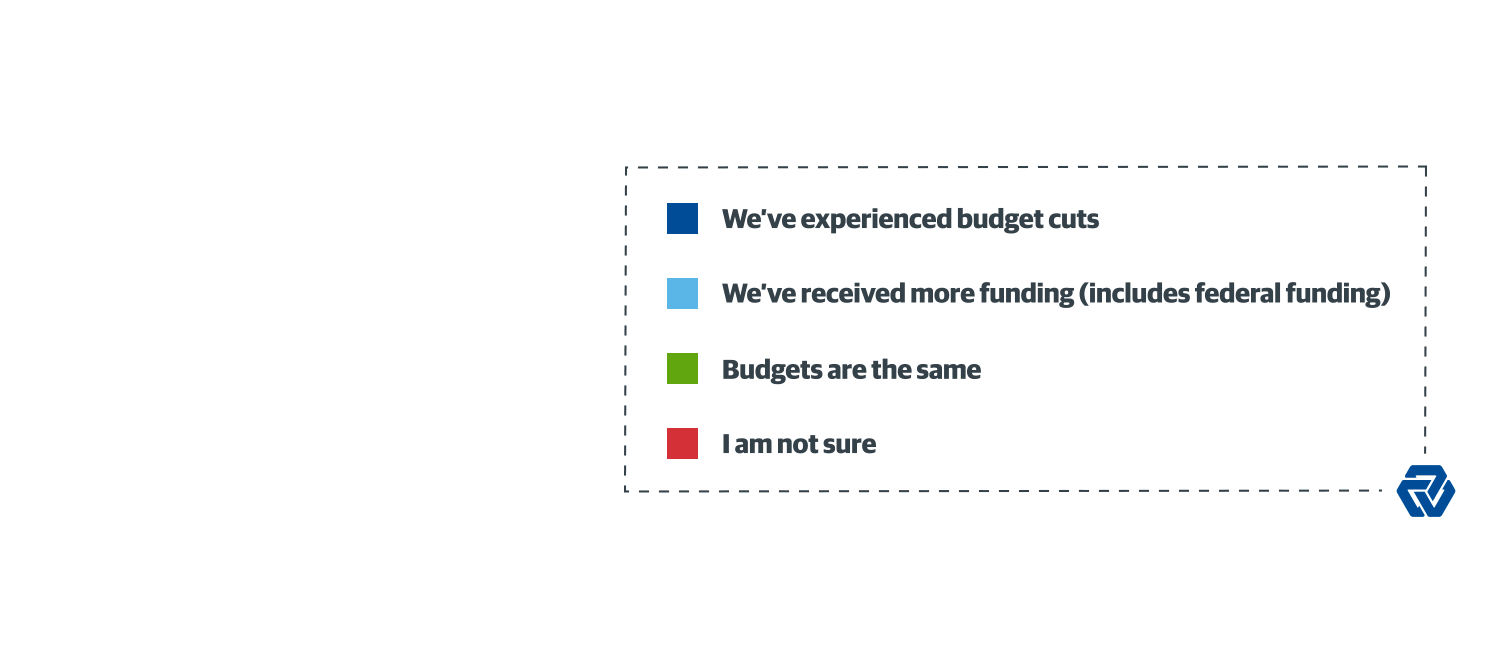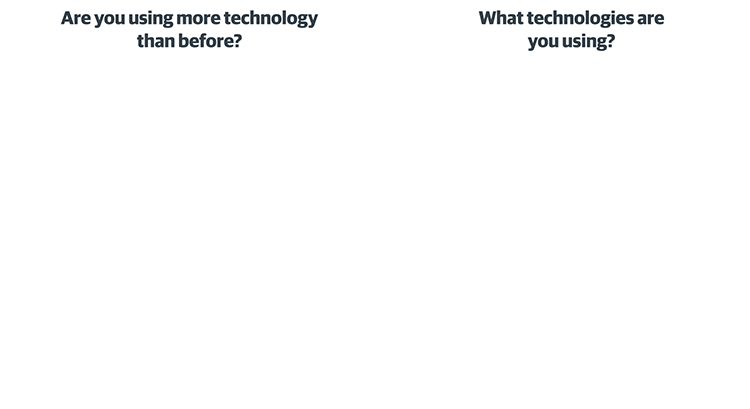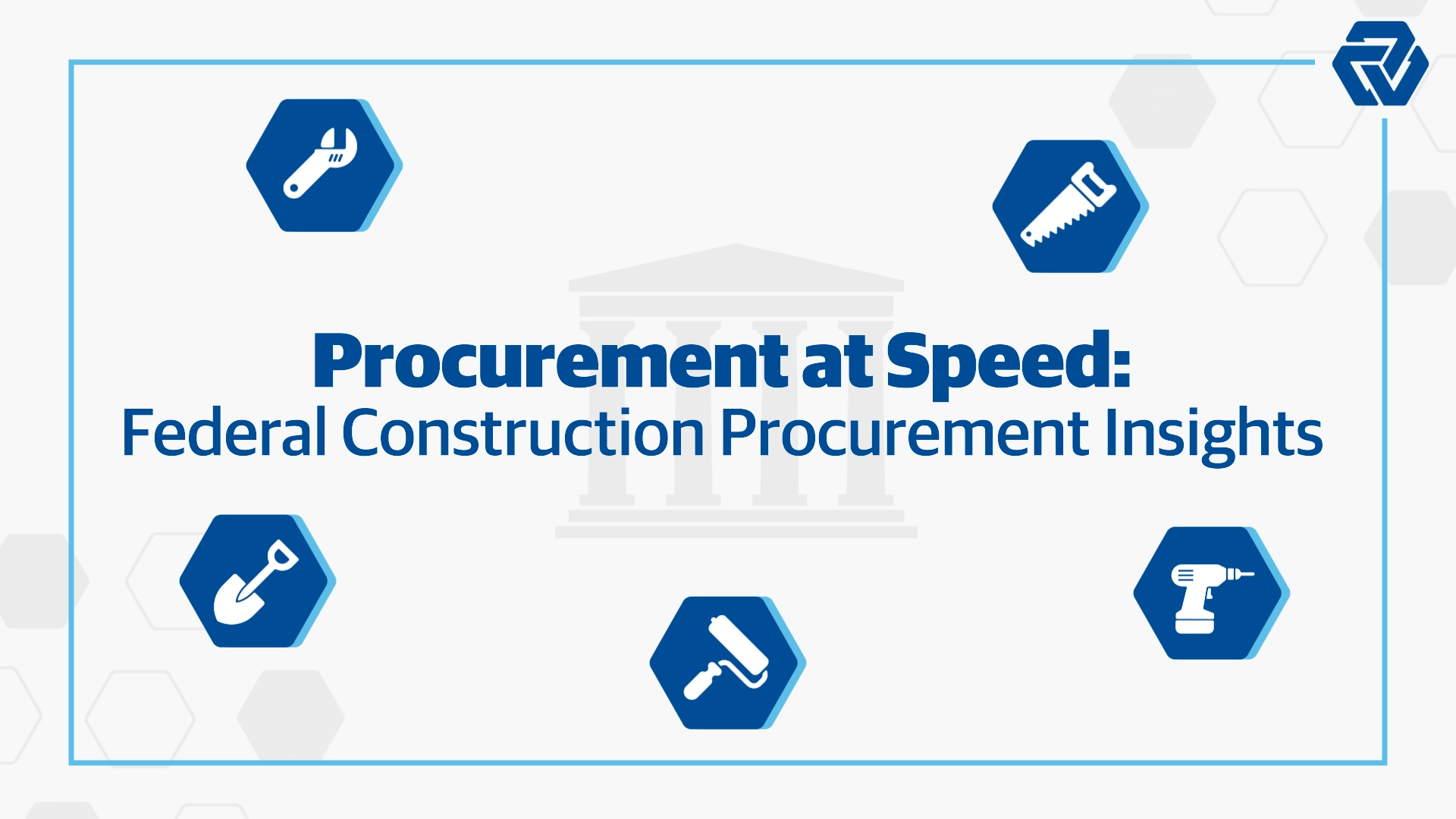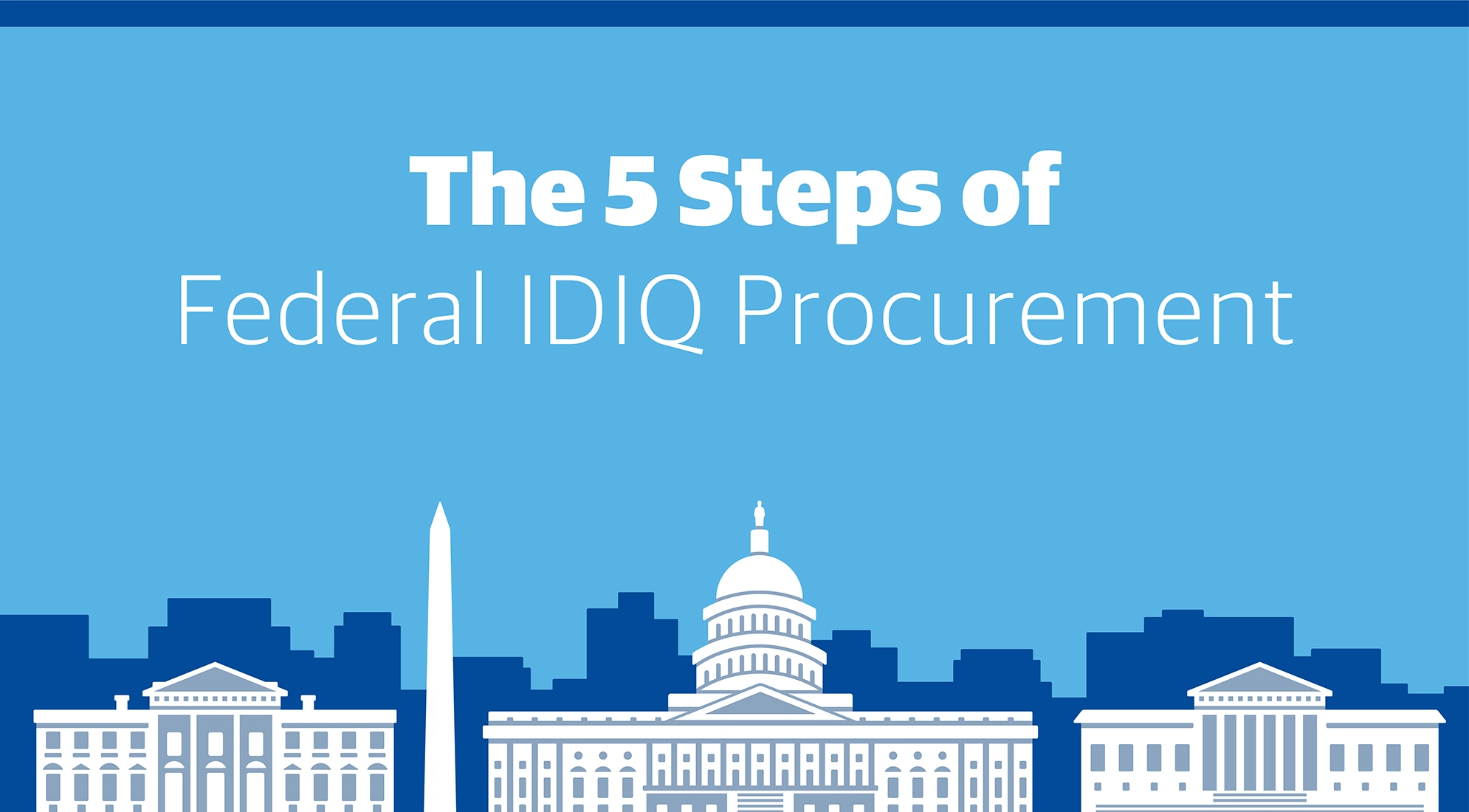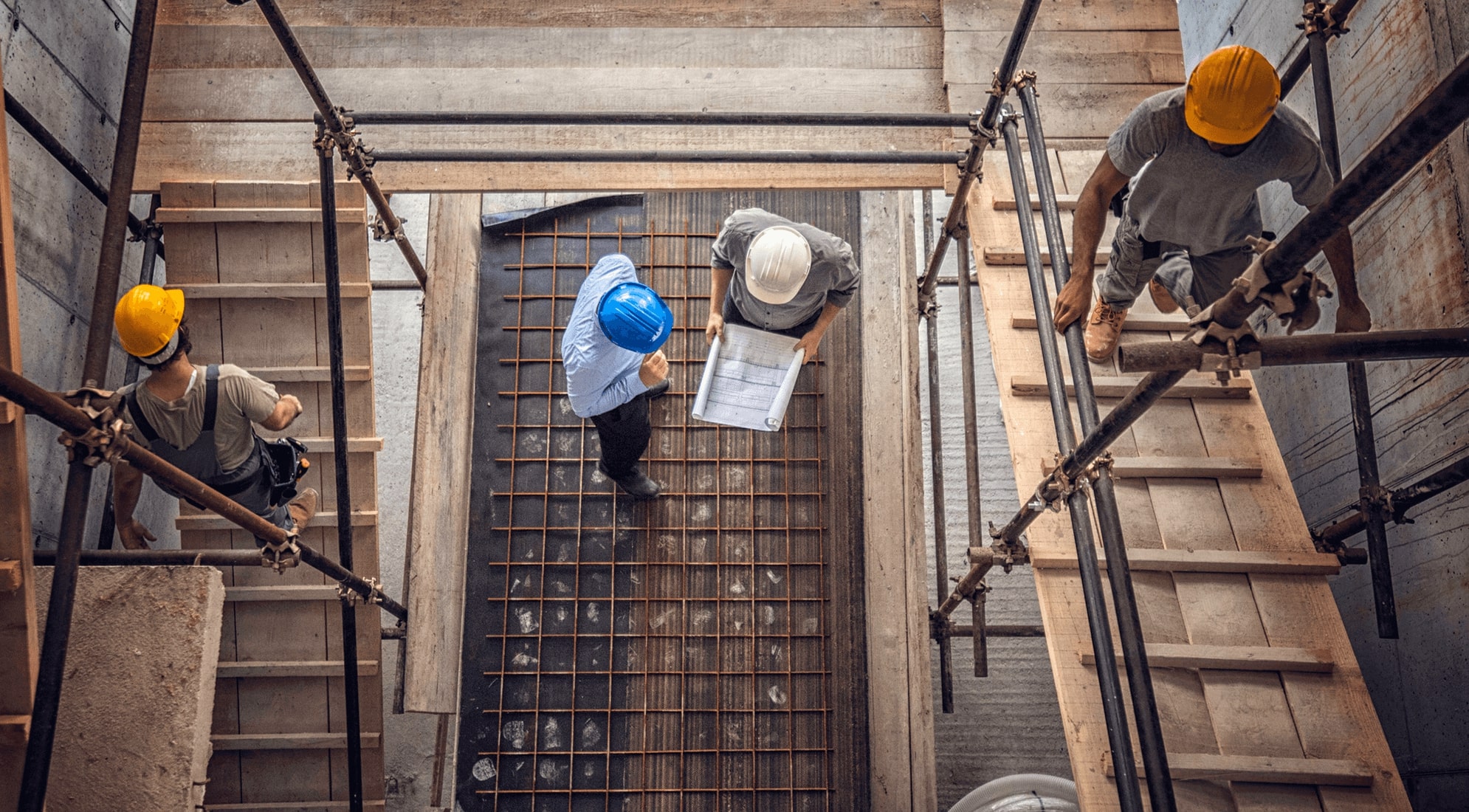In partnership with Facility Executive, we recently surveyed hundreds of facilities leaders to find out how their needs and priorities have changed over the past 18 months. More than 200 respondents representing several industries participated in the survey.
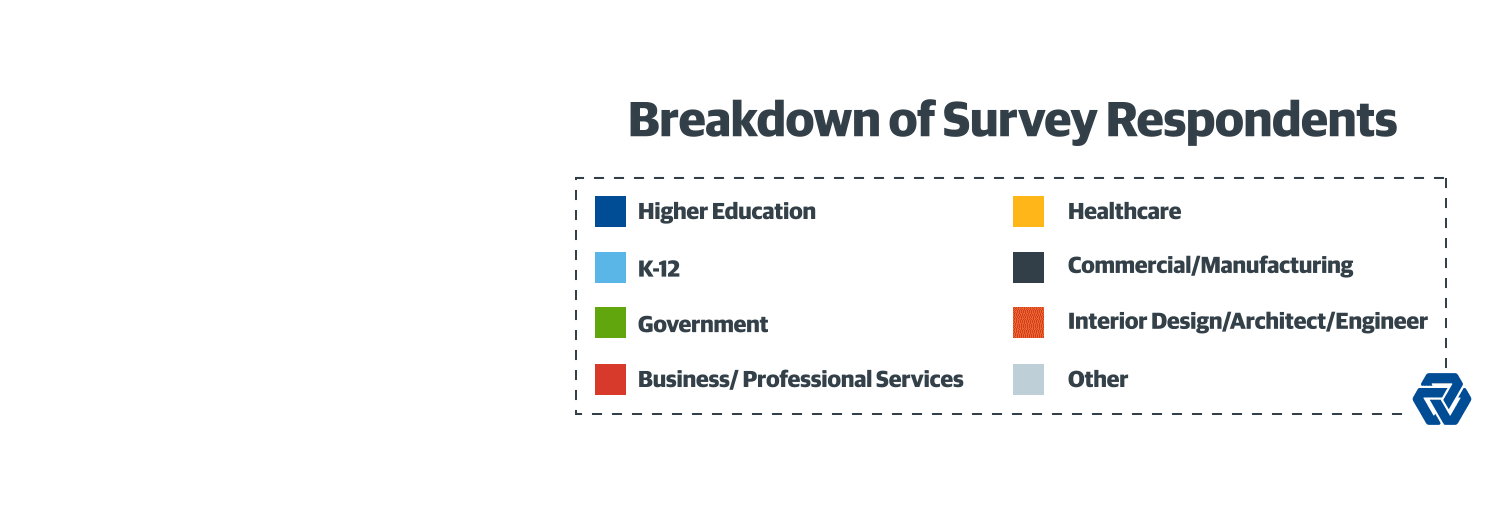
We shared the survey results and additional insights and examples from facilities experts in a recent webinar, Facilities Trends and Considerations: Where We Go From Here, but here are several key findings:
1. Space Adaptations were Widespread
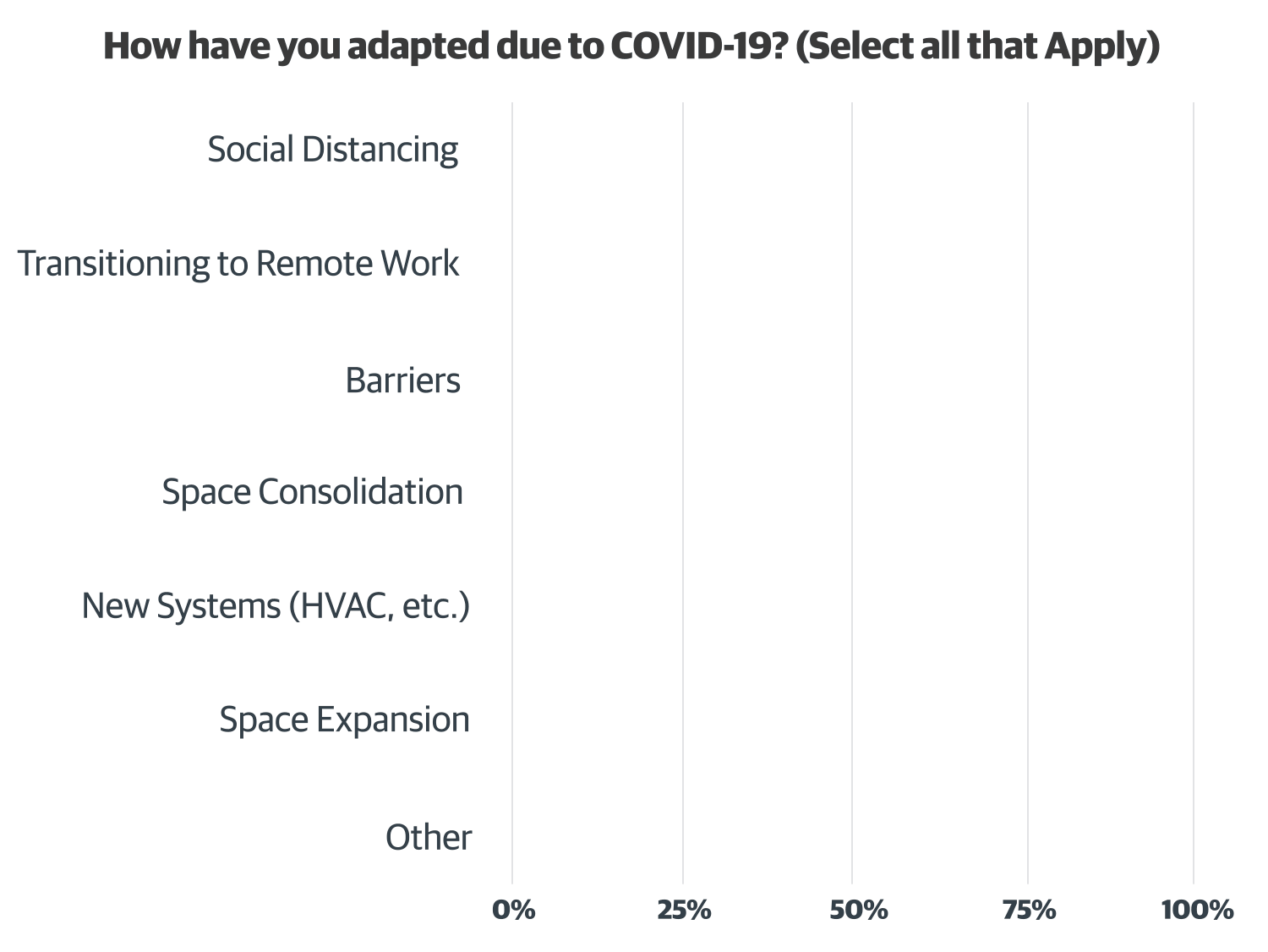
We began the survey by asking how respondents have had to adapt their facilities, physical assets and/or space due to COVID-19. 91% of respondents indicated social distancing, which was expected, and transitioning to remote work was selected by nearly 70% of respondents. For those who worked on-site or accessed facilities, the addition of barriers was another common adaptation.
Most “Other” responses included enhanced safety and sanitation measures, such as increased cleaning, temperature checks, the addition of touchless automations and tracking who enters the building.
2. Project Postponement was Common
A majority of survey respondents had to either halt or postpone planned projects and/or transition work to meet new safety protocols. On March 19, 2020, Pennsylvania became the first state in the nation to order all construction activity to stop as part of a sweeping measure to cease operation of all “non-life sustaining businesses,” and a few other states followed suit with their own construction stoppages. Several respondents, mostly in the public sector, continued essential work as planned, and some of those agencies used federal funding to complete those projects.
In some cases, the pandemic accelerated construction work. The 2021 Hospital Construction Survey, conducted by ASHE’s Health Facilities Management magazine, showed that of the hospitals that had at least one project continue, 29% said the project was fast-tracked due to the pandemic. Additionally, all industries experienced supply chain issues due to both materials and labor shortages.
3. This Year’s Construction Projects are Picking Up Where Last Year’s Projects Left Off
Respondents then shared how project priorities changed this year for a direct comparison between 2020 and 2021. Many organizations have resumed their planned work this year, and it is not surprising to see there’s still a considerable amount of work needed to execute new safety protocols.
For more insights into the survey responses survey and other outside influences and economic considerations to keep your eye on for upcoming construction projects, watch the on demand webinar.
4. Budget Cuts Are the Norm
We asked respondents how their budgets/funding has changed this year, and many organizations are facing budget cuts. These budget cuts or loss of revenue, even if temporary, can have lasting impacts on facilities.
We dug into what is impacting these budget changes, and across the board most responses fell into the following categories:
- Reduced staff or occupants in buildings: Since fewer people are occupying spaces, there are fewer immediate needs, and budgets may be shifted or reallocated elsewhere. Unfortunately, many organizations faced layoffs, furloughs and/or hiring freezes, as well.
- Lost revenue: Many organizations that indicated loss of revenue are in the commercial, manufacturing and hospitality industries. However; higher education also faced staggering revenue declines.
- Supply chain issues and material cost increases: Unfortunately, supply chain woes are continuing across the globe. Gordian’s data team is constantly monitoring material costs, and in general aggregated material costs are increasing. While we’re seeing aggregated cost increases, the drivers for these increases come from a specific set of materials/type of materials. The aggregated material costs increases are mostly falling into three groups:
- Cost inflation due to COVID-19 pandemic (ex: Lumber-based materials)
- Costs that were rising pre-pandemic and continue to rise (ex: Steel, Copper, Aluminum-based materials)
- Costs that may not have a sharp increase, but have started to increase (ex: Interior finishes)
- Air quality/cleaning expense increases: Likely driven by the need to improve indoor air quality in a year that hinged on infection control, many respondents indicated they put in new systems – such as new HVAC or air purifiers. These results are back up in other places. Schools received a D+ in the 2021 Report Card for America’s Infrastructure, in part because 53% of public school districts report the need to update or replace multiple building systems, including HVAC systems. Nearly 41% of schools reported issues with HVAC systems. Additionally, the recent 2021 Hospital Construction Survey indicates that the number of healthcare ventilation projects jumped considerably in 2020. Roughly 46% of respondents are replacing/upgrading or plan to replace/upgrade air handlers and ventilation systems in the next two years. Another 17% are currently replacing or upgrading exhaust fans. Our internal cost research has shown there has been a large shift in AC unit costs. Pre-COVID, material costs for AC units were falling by -7.9%. Since COVID, they’re up 20.9%. These projects now cost more than they used to.
It’s worth noting that research beyond our survey shows that budget cuts have been especially painful at colleges and universities. The American Council on Education projects that the higher education industry needs at least $180 billion simply to offset revenue losses and COVID-related expenses to maintain safe operations during the pandemic. Capital budgets have been similarly impacted, with many campuses halting planning activity and stopping or curtailing active construction projects. Annual allocations to capital renewal have been reduced or eliminated as schools looked to preserve cash to handle near-term pandemic response and future unknown needs. Even if these annual allocations are resumed, the acceleration of deferral cannot be reversed, and the condition of higher ed facilities will continue to move in the wrong direction.
You can read more about the impacts to Higher Ed in our annual State of Facilities in Higher Education report.
5. A Wave of Renovations is Coming
COVID has forced organizations to think more strategically about their space – Do we really need to build that next new building? What does returning to the workplace look like? – and when asked what types of construction projects organizations are planning to complete in the next couple years, a vast majority indicated renovations, maintenance and/or repairs. Only 18% indicated mostly new construction.
These findings have been reinforced elsewhere.
The 2021 Hospital Construction Survey also indicated that hospitals are focusing primarily on renovations over new construction, and more specifically, they are focusing on outpatient facilities projects. Funding will go primarily for building or planning acute care and specialty facilities, medical office buildings, physical plants and ambulatory facilities.
6. Construction Tech Adoption is a 50/50 Proposition
In the brave new world of remote work, widely available web tools and video conferencing, surprisingly, more than half of respondents said they have not increased their use of technology in project planning, scheduling and execution. The reasons for this are unclear. It may be that now is not the time to invest in new software/technology. Or perhaps organizations simply haven’t gotten around to upgrading their tech yet.
For those that have invested in more technology, responses fell into the categories of using more building/construction software, such as BIM, project management tools and holding more virtual meetings and using technology to walk and survey space.
Needed: Partners That Can Meet the Moment
With a host of new challenges before them, facilities leaders are in need of business partners that can help them maximize their dwindling budgets and reduced staff as they strive to improve the health of their facilities after a year of unexpected adaptations. Every industry was rocked by the pandemic, and it will take collaboration between leaders and suppliers to find solid footing.
Gordian offers data, software and expertise for every phase of the building lifecycle. From facility planning solutions to help you assess the condition of your physical assets and make smart facilities investments to powerful construction procurement solutions that support your current staff and construction cost data that provides up-to-date insights into material, labor and equipment pricing, Gordian can help you save time, control costs and work more efficiently.



